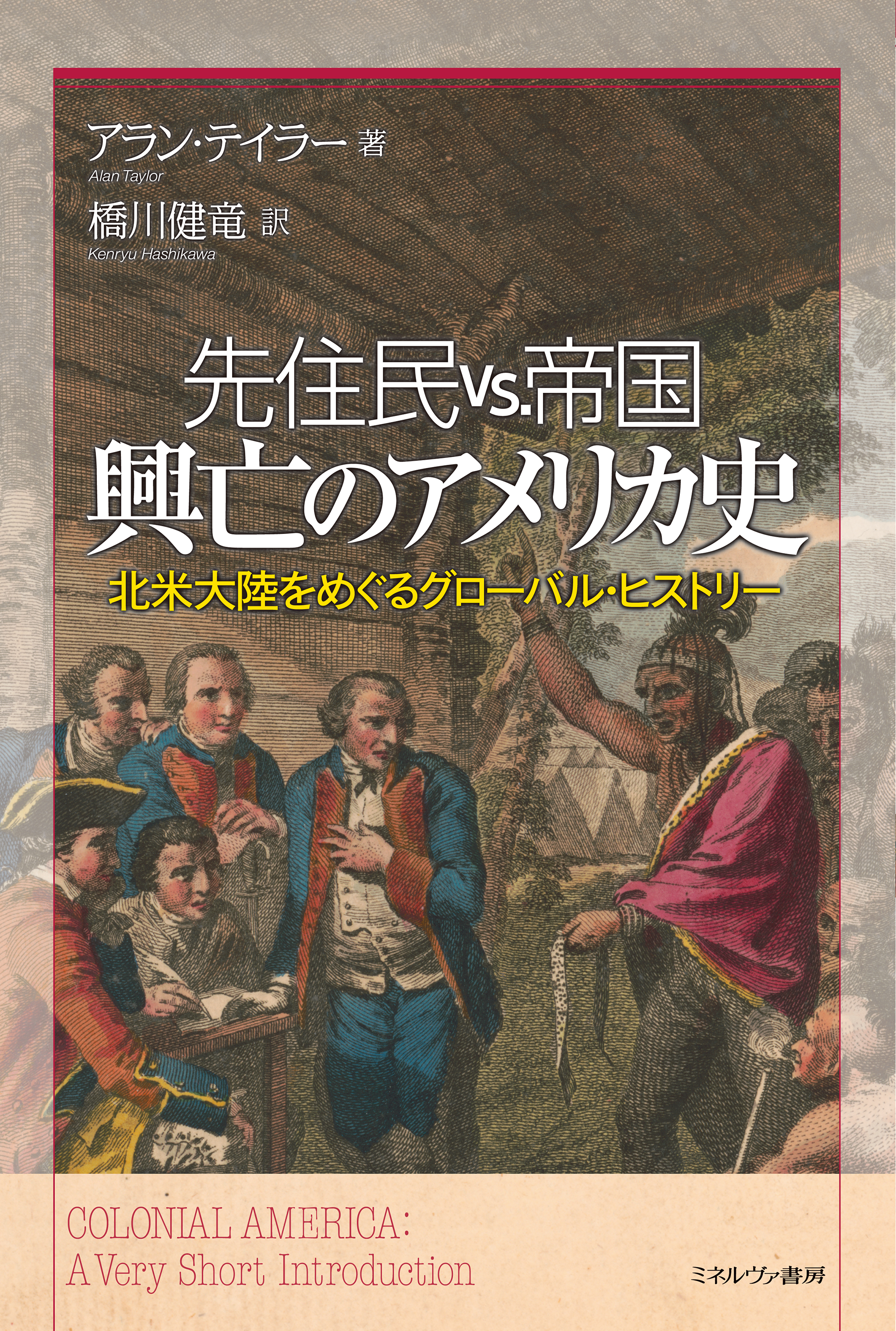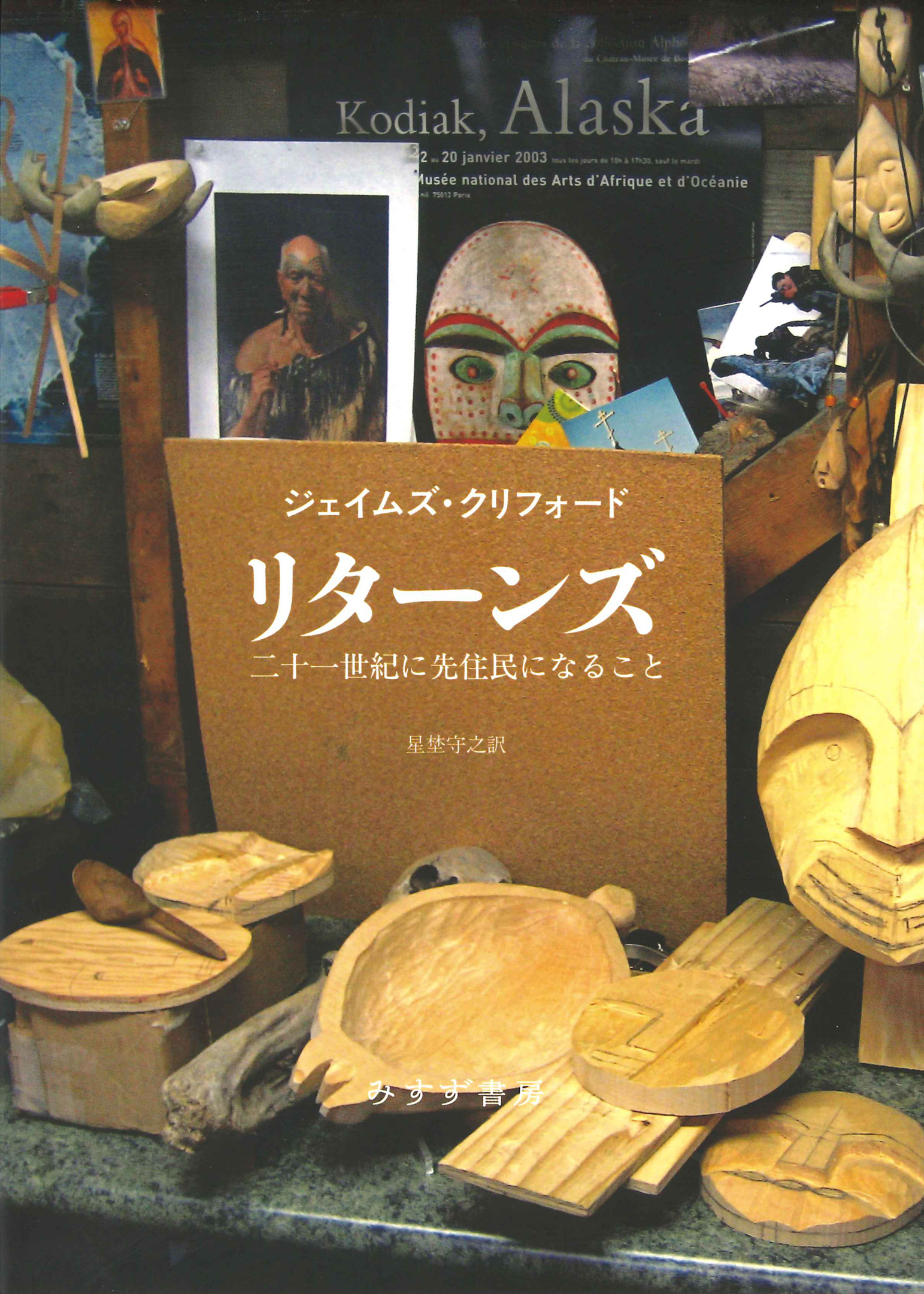
Title
Senjūmin vs. teikoku kōbō no America-shi (Natives vs. Empires, Their Rises and Falls as American History)
Size
232 pages, 127x188mm
Language
Japanese
Released
December 20, 2020
ISBN
9784623089918
Published by
Minerva Press
Book Info
See Book Availability at Library
Japanese Page
Natives vs. Empires is the highly-deserved Japanese edition of Colonial America, a volume of Oxford University Press’s renowned series titled “Very Short Introduction.” It surprises readers with its concise and sparkling treatment of diverse characters animating the great geographic expanse of the North American continent, spanning centuries. An eye-opener and eminently readable, this book provides a completely new perspective on early North American history. It is among the best introductions of this subject, particularly for the Japanese community of Americanists.
Authored by Alan Taylor, a doyen of early American history and professor at the University of Virginia, this book provides a stunningly novel overview of the history of the North American continent up to the 1770s. It addresses not only the British colonies on the Atlantic seaboard, but also the French colonies of Quebec and Louisiana, and Spanish colonies of New Mexico and Texas. The book also deals with the otherwise neglected Dutch and Russian colonies. It pays ample attention to the “Atlantic” perspective, devoting major portions of the chapters to the unwitting introduction of diseases by European colonizers and the rise of slave society in the Chesapeake region and Carolina, the latter being greatly influenced by the Caribbean colonies. Taylor’s discussion also extends to the Pacific coast, describing the Spanish colony of Alta California, the voyages of Captain James Cook, the people on the islands of Hawaii, and the rising otter skin trade with China.
These, however, are not the highlights of the book. It also seriously considers the Natives (Indians) by describing how they managed to cope with European colonizers. The Natives had built varied and robust communities prior to 1492 by adapting to the contrasting climates of the continent. Devastated though they were by European diseases, many natives navigated them and faced off with Europeans. They changed warring tactics; used guns and horses skillfully; inflicted major blows on colonial troops; played tough, unpredictable negotiators; and even influenced general colonial policies in Europe. Particularly impressive were the inland Native groups that benefited by obtaining guns from French merchants and kept the Spanish colonies reeling with their raids. From the 16th through 18th century, North America witnessed not only the inroads made by the European colonizers and maturing of the British mainland colonies, but also the waves of dynamic collisions between empires and native groups that continued to affect everyone concerned. The colonies often struggled to accommodate to the Natives even as they consolidated African slavery.
The deerskin map reproduced in pages 4-5 of the Japanese edition gives the reader an excellent idea of the direction of the book, showing how Natives in Carolina, in the 1720s, uniquely envisioned native-colonizer relations. With three additional maps and a supplementary bibliography of relevant publications in Japanese on the early history of Canada, the US, Latin America, and Europe, Natives vs. Empires is bound to remain an ideal point of departure for Japanese students and scholars who launch themselves into studying America broadly and expansively.
(Written by HASHIKAWA Kenryu, Professor, Graduate School of Arts and Sciences / 2021)
Table of Contents
Chapter 1: Encounters
Chapter 2: New Spain
Chapter 3: New France
Chapter 4: Chesapeake colonies (註:colonies の c は小文字)
Chapter 5: New England
Chapter 6: West Indies and Carolina
Chapter 7: British America
Chapter 8: Empires
Timeline
Further Reading
”Translator’s Afterword”



 Find a book
Find a book


